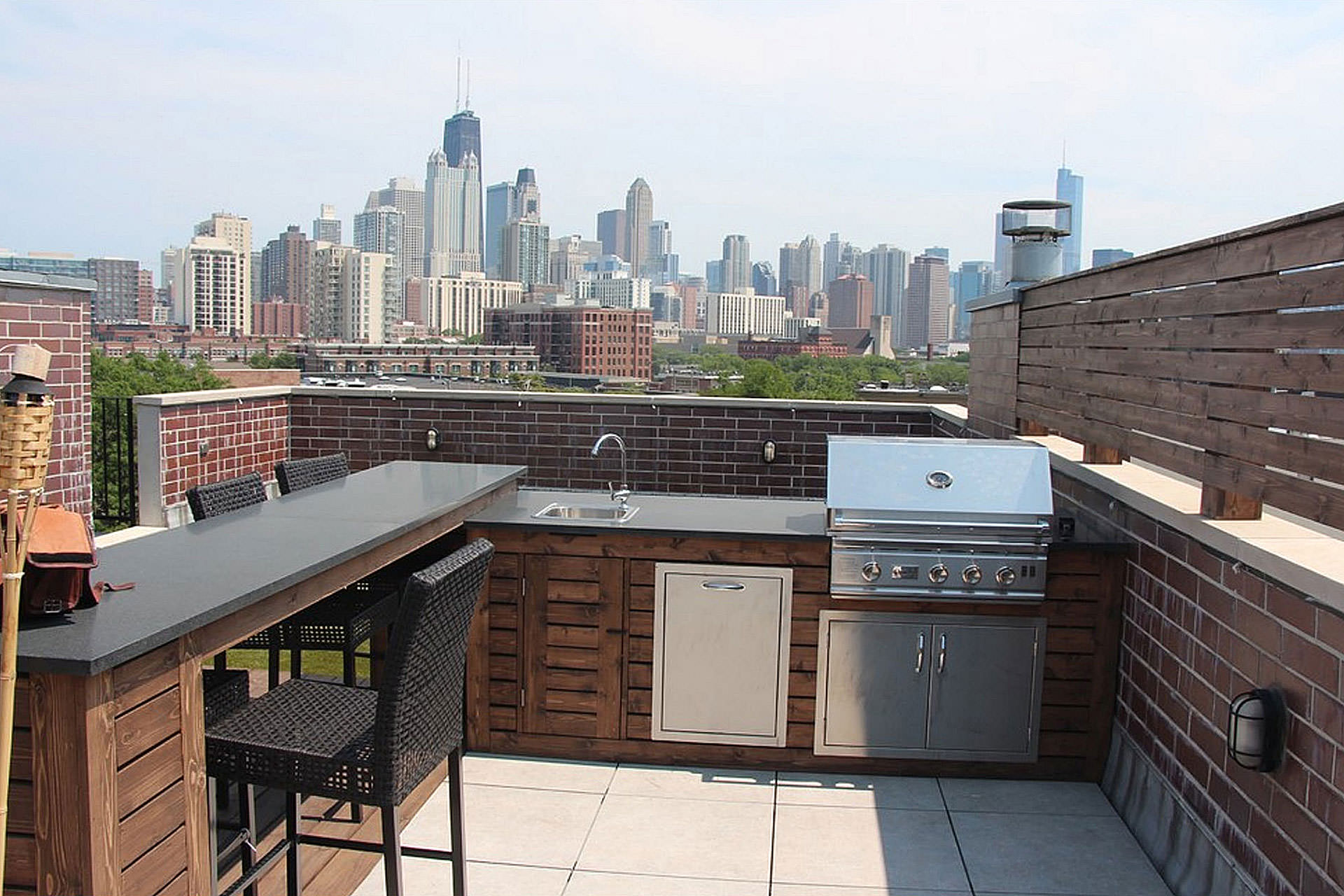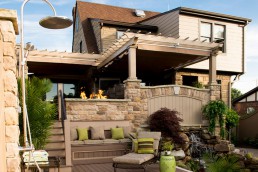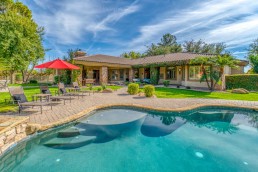5 Steps To Designing The Ultimate Outdoor Kitchen
More and more homeowners are taking advantage of a growing trend and enhancing the value of their homes and quality of life by building an outdoor living space. These living spaces work as a natural extension of a home and can deliver fully-functional rooms in a fresh and invigorating way. One of the most popular outdoor rooms today is the outdoor kitchen. An outdoor kitchen gives a homeowner an entirely innovative way to entertain guests or even enjoy an everyday family dinner. But what do you need to know to design one of these spaces?
The following five steps will help you get started on designing the ultimate outdoor kitchen:
Step 1: Assess Your Outdoor Space

To create a fully-functional kitchen in an outdoor space, you will need access to the amenities you leverage in your home’s interior, including electricity, gas, and plumbing. Your first step in planning out your outdoor kitchen is determining how and where these utilities can integrate into a space. Remember, you will need sufficient lighting to cook at night, and that it’s also important to have a full plumbing setup, including fresh water and water waste lines. Additionally, keep in mind that it is very likely that local codes may have a lot to say about your project; make sure that you’re up to code and have all the necessary permits to pursue your outdoor space.
Step 2: Zone Planning

Just as in an indoor kitchen, you will want to plan your layout based on traditional kitchen zones. Zone planning increases flow and productivity in a kitchen and makes food prep a much more pleasant experience.
Prep Zone: Situated beside the cooking zone and enables easy transfer of food. This zone includes a sink, cutting area, and cold storage pantries.
Cooking Zone: Includes grills (gas is most popular), burners, tandoori ovens and other outdoor cooking appliances.
Plate and Serve Zone: In between the cooking zone and where your guests are, this area usually includes a garnish center and warming trays/drawers.
Entertain Zone: Must be away from the cooking and prep zone to allow guests to be away from the food preparation. This zone usually includes compact refrigerators for keeping drinks and condiments cold, ice machines, bar taps, and wine coolers.
Step 3: Choosing the Right Appliances

It is in the selection of the major appliances that an outdoor kitchen steps away from traditional, interior choices. Many homeowners choose to take advantage of the outdoor setting to leverage appliances that might prove dangerous or complicated inside, including wood-burning pizza ovens, tandoori ovens, and grills. Given that an outdoor kitchen is often used for entertainment, many homeowners also like to use a beverage fridge for beer and wine in their entertain zone. Assess your priorities and interests, and choose appliances that make your outdoor kitchen a unique experience.
Step 4: Furnishing an Outdoor Kitchen

Your outdoor kitchen will double as a prep, service, and entertainment space. If you have sufficient room, consider integrating an outdoor dining table with benches. If you’re dealing with less square footage, take advantage of your counter space. An open counter space matched with tall stools can double as an entertain and dining area.
Step 5: Weatherproofing for Year-Round Entertaining

An outdoor kitchen doesn’t need to shut down the minute the weather turns. In fact, there are plenty of options that homeowners can leverage to ensure that their outdoor kitchens are up and running year round. One of the most popular coverage options is a pergola with a retractable canopy. A well-constructed pergola with retractable canopy can protect the appliances and furnishings in your outdoor kitchen and allow guests to indulge in as little or as much sun as they like.
Putting together an outdoor kitchen can be an enjoyable and simple process, when approached systematically. By following these basic steps, you can easily design a plan that can lead to the creation of the ultimate outdoor kitchen.
Have you turned your own backyard into an outdoor kitchen or are you in the midst of your own planning stage? Please provide some of your own helpful tips in the comments below. If you have any questions related to covering your outdoor spaces (including outdoor kitchens), please contact us.
Retractable Solutions for Outdoor Spaces
Please complete the form below to download our free eBrochure.
Price List included
Related Posts
January 29, 2014




No matter how much you wanted it to be an outdoor kitchen, water-proofing is still needed so that you can secure everything in it. Doing this will give you the chance to use the kitchen anytime of the year as well. So, invest on proper water-proof solution for your outdoor kitchen.